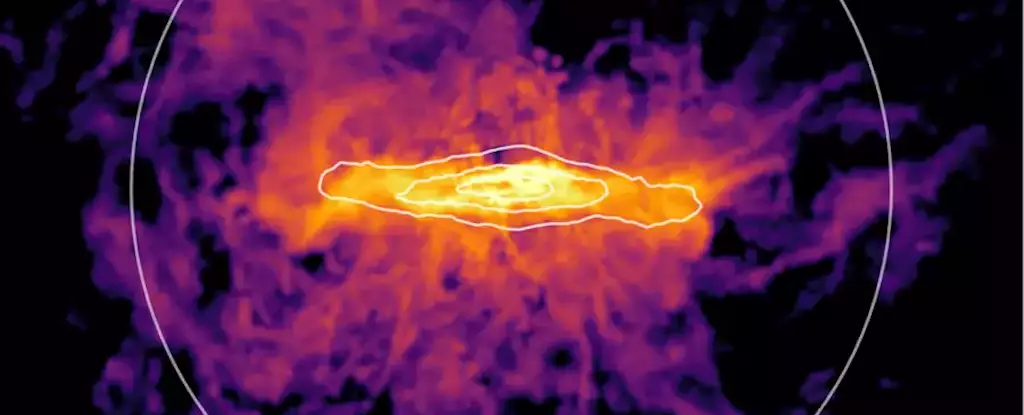The cosmos has always captured human imagination, defying the boundaries of our knowledge and expanding our understanding of where we, and everything around us, originate. Carl Sagan’s memorable declaration that “we are made of star-stuff” serves as a profound reminder of our connection to the universe. However, recent findings suggest a much more extensive journey for that ‘star-stuff’—specifically carbon—ahead of its eventual incorporation into our bodies. This article delves deep into groundbreaking research that expands our understanding of the circumgalactic medium (CGM) and the vital role it plays in the elemental cycles that govern galaxy evolution.
At the heart of every star lies the workshop of elemental creation, where nuclear fusion forms heavier elements such as carbon and oxygen. When stars exhaust their nuclear fuel, they can end their life in a spectacular explosion known as a supernova, dispersing these elements across the galaxy. This is the genesis of the material necessary for the formation of new stars, planets, and, eventually, life itself. However, the journey of these elements doesn’t stop within the confines of their home galaxies. A recent study utilizing Hubble Space Telescope data has revealed that carbon can venture far beyond galactic borders and return.
Researchers investigated the CGM surrounding eleven star-forming galaxies and discovered significant concentrations of carbon located up to 391,000 light-years from the galaxies themselves. By comparison, the expanse of the Milky Way’s visible disk spans around 100,000 light-years, demonstrating that our elemental building blocks can indeed cover vast distances in their intergalactic travels.
The CGM acts as a crucial intermediary in the life cycles of stars and galaxies. It can be likened to a cosmic train station: elements are continually expelled from their parent galaxies via stellar explosions, before being recaptured to trigger the formation of new celestial bodies. The research highlights the CGM as a massive reservoir—storing not only carbon but also other heavy elements that play a pivotal role in star formation.
Lead researcher Samantha Garza emphasizes that the observed motion of material within the CGM reinforces the notion that it serves as a complex, dynamic system that actively participates in galactic recycling. Unlike what was previously understood, this study reveals how cooler elements, such as carbon, also find their way into the CGM and are transported back into star-forming environments.
The idea that the very carbon that comprises our bodies may have ventured out into the void, then returned, imbues Sagan’s quote with a new layer of significance. The research quantitatively estimates a staggering mass of approximately three million solar masses of carbon circulating within the CGM. More intriguingly, it indicates that galaxies that are actively undergoing star formation maintain higher levels of carbon, corroborating previous findings regarding the prevalence of oxygen in the CGM of these active galaxies.
Through advanced spectroscopic techniques, the research team detected the unique light signatures of carbon in these distant regions of space, allowing them to trace its path. This novel approach sheds light on our understanding of the life cycle of stars, suggesting that carbon made multiple journeys through the cosmos before settling on Earth.
Understanding the dynamics of the CGM provides astronomers with essential insights into the broader processes governing galaxy evolution and interaction. One exciting prospect is the role CGM plays when galaxies merge—a phenomenon anticipated for our Milky Way’s future. As galaxies collide, the intricate dance of materials within the CGM can affect star formation rates and the elemental composition of the resulting galactic residents.
An analysis of these cycles may also unlock answers regarding periods of active star formation versus dormancy, helping astronomers piece together the complex evolutionary puzzle of galaxies.
The research emphasizes that the material that forms our bodies has led an extraordinary life, venturing through the fabric of space before ultimately contributing to life on Earth. The significance of understanding the interplay of elements within the CGM broadens our perspective on existence itself—an existence rooted in a grand cosmic cycle. Thus, Sagan’s sentiment resonates stronger than ever, inviting us to ponder the magnificent journey our star-stuff has made across the expanse of the universe, weaving together the narratives of stars, galaxies, and life.


Leave a Reply